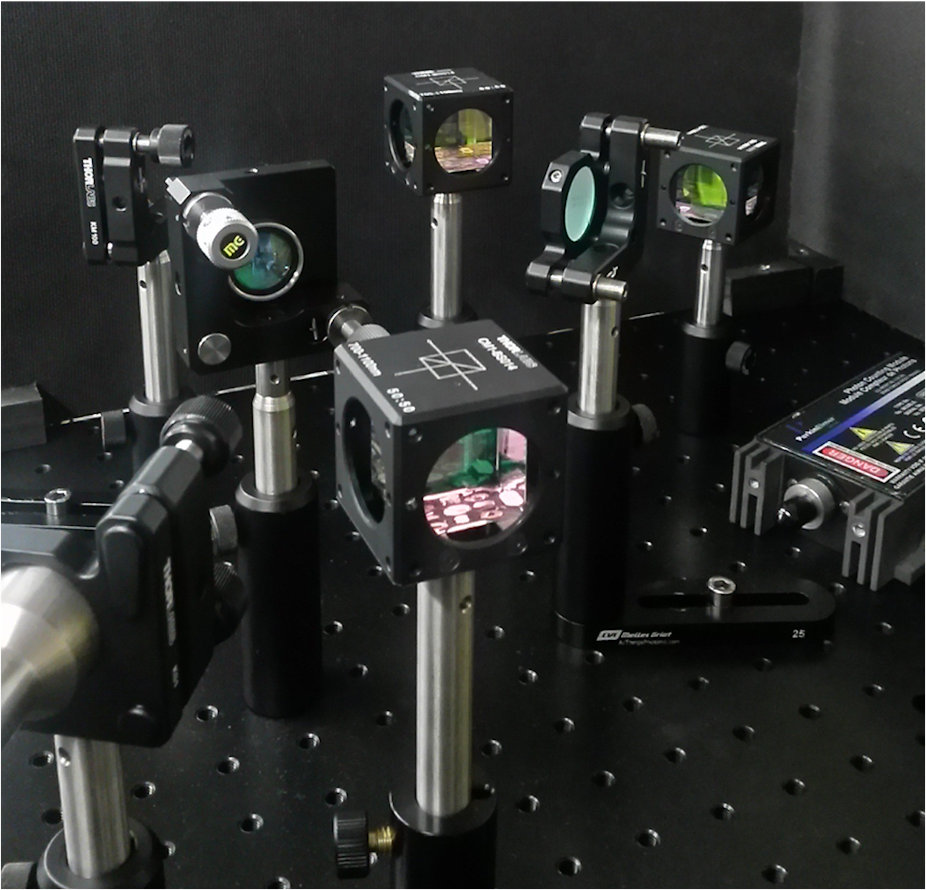Data security, which is aimed at ensuring secure internet communications, must keep pace with the hacking capability of eavesdroppers. Data and communications will become more vulnerable to attacks as decryption technologies strengthen with faster and more powerful computers.
Current encryption standards rely on random number generators and complex mathematical formulae. The problem is that technological advancement will put current encryption methods out of date. This will leave data exposed and open to interception until better decryption methods are developed.
But a whole new world is opening up. Future security lies in quantum key distribution, a field that has undergone rapid research and development since the first scheme appeared in 1984. Quantum key distribution uses quantum mechanics to ensure secure communication. This enables two parties to produce a shared random secret key known only to them, which can then be used to convert and decipher messages.
It can be applied to both fibre optic networks and free space satellite communications. The technology to support quantum key distribution transmissions at high speeds over different channels is being developed to easily fit into existing networks.
Quantum physics opens up a new world
Quantum key distribution has the potential to become the key technology for securing confidentiality and privacy. The laws of quantum mechanics are not vulnerable to technological advancement, making quantum key distribution the first and only unconditionally secure data encryption method.
How is this possible? The astonishing effects of quantum physics mean that quantum-secured messages are safe from eavesdropping. Used in a one-time pad technique, quantum key distribution can encrypt data transfers, whether for corporate, government or personal use.
The development of quantum key distribution technologies in different telecommunication channels will make a global quantum network possible.
How it works
The power of quantum key distribution allows two parties to establish a secret key from a short, pre-shared authentication password and a public exchange. This is not possible with traditional, non-quantum means.
It is able to fulfil two requirements for unbreakable security:
The generation of a truly random bit sequence from a quantum random number generator to be used as a one-time pad encryption key; and
The secure distribution of the encryption key between authenticated users.
Quantum key distribution uses the laws of mechanics as a tool to secure an encryption key shared between users. The key is in the form of a binary bit sequence and can be combined with sensitive data to make it unintelligible. The premise is simple – if an eavesdropper steals encrypted data, they cannot get information from it if the key is random and secure.
Quantum particles, such as single photons of light, are used as data carriers to form the encryption key. Quantum particles display behaviour which can be used to keep information secret.
If an eavesdropper tries to measure or copy the information carried by a quantum particle before it reaches the intended recipient, the authenticated users will notice a high error rate during its transmission. They can then get rid of the key and begin the process again. The intercepted key has not yet been used to encrypt sensitive information so no harm is done by discarding it.
Many key distribution schemes have been devised and tailored to suit different applications. Single photons are encoded with quantum bits of information using two level systems such as polarisation states or phase differences between pulses to represent binary data.
The quantum bits are sent over a dedicated quantum channel but key sifting procedures are publicly discussed. Quantum protocols are designed so that public communication is ambiguous to an eavesdropper and does not require more security.
From an idea to an off-the-shelf product
Current commercially available systems can be used to encrypt fibre optic network communications in metropolitan areas. New research focuses on extending the channel length using low-loss fibre or more efficient detectors.
Researchers are also looking into quantum repeaters – a device that can amplify a signal without destroying information.
Free space quantum communication via satellite is better suited over large distances. Free space quantum key distribution technology is an active area of research, focused on overcoming turbulence effects which disturb transmissions.
Short-range, personal quantum key distribution devices are a new and exciting area of research. These devices can provide consumers with an encryption key top up which can be used for credit card payments or bank transactions. The devices are designed to be small enough to be handheld or even fit into mobile phones.
Quantum key distribution has found a foothold in South Africa. In 2008, Durban became the world’s first Quantum City, using commercial quantum key distribution systems to encrypt the eThekwini Municipal fibre network. The Moses Mabhida Stadium in Durban also became the first stadium to use quantum technology to encrypt security communications during the 2010 World Cup.
Uses of quantum key distribution
The European Telecommunications Standards Institute has published standards relating to the use of quantum technology. Some possible applications include:
Encrypting transmissions between branches of an enterprise or government agency over a metropolitan area network. This includes data transfers to and from an offsite backup server;
Secure communication for critical infrastructure control or in a network backbone; and
Encrypted communication between remote sites via untrusted nodes.
In a society driven by cybercommunication, it is easy to want to apply unbreakable security measures to all communications. But what are the implications of having all data transmissions completely secure and secret?
There is no guarantee that unbreakable encryption won’t be applied to communications about nefarious activities. While quantum key distribution offers new possibilities in data security, it is important to consider how this technology should be used.
This article is based on a paper in the July/August 2015 issue of the South African Journal of Science.

